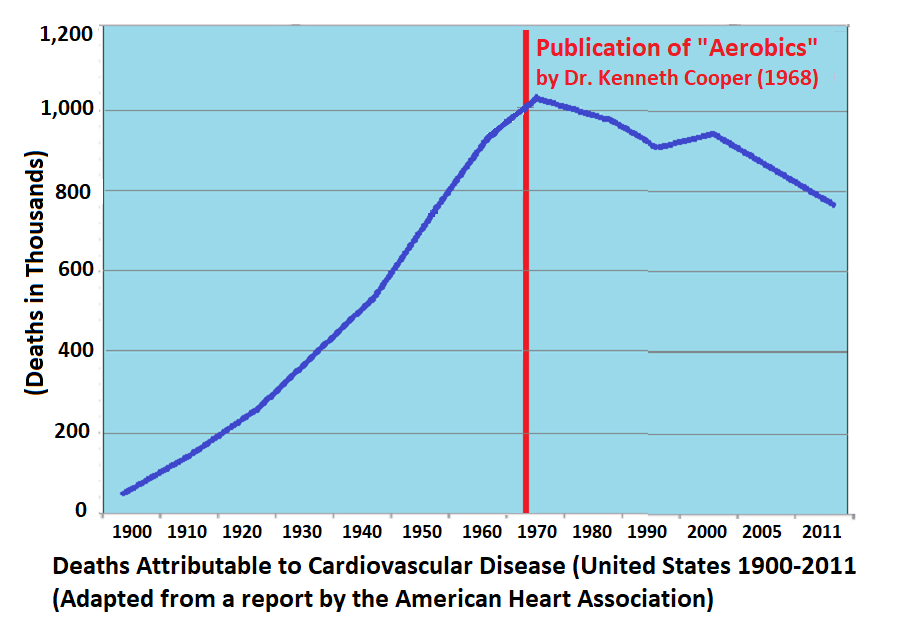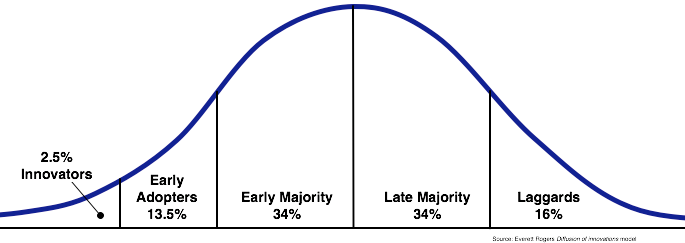While I get settled with my new position, I am also going to be re-posting over 50 case stories on the Metarobics Facebook Page, of those who have used various forms of mindful exercise to combat cancer, many at death’s door. It was my own students with cancer which got me looking in the direction of Metarobic effects on physiological functions related to enhanced blood oxygen saturation, diffusion, and oxygen metabolism. Following the posting of part three of “Why Metarobics,” and the case stories related to cancer, I will be returning to a wider range of conditions, as well as directions for new research into the field of Metarobics and Mindful Exercise. It there is any particular area you would like addressed, please let me know. In the meantime, please enjoy part one of “Why Metarobics?”
WHY METAROBICS? - PART ONE
Exercises such as Tai Chi and Qigong have been around for a long time. A growing body of research is supporting a wide range of benefits for a variety of chronic conditions (See “Mindful Exercise: Metarobics, Healing, and the Power of Tai Chi” for more information). Yet these exercises are practiced by a small minority of the population. One of the primary barriers identified during a national expert meeting, conducted by the National Council on Aging, is a lack of understanding of how and why these exercises provide such a variety of benefits, beyond “Qi,” usually defined as “Vital Energy.” This has been identified as a barrier to the adoption of Tai Chi for those who desire a more specific answer, as to how and why exercises such as Tai Chi would be of benefit (as stated by a survey respondent – “It looks like they are waiving their hands around for no reason”). Another barrier identified was a lack of user friendly classes for older adults, and for those with chronic conditions.
With the wide range of chronic conditions which exercises such as Tai Chi benefits, it is critical to research, support and promote an evidence and theory based perspective of these exercises. The term Metarobics (alternatively Metaerobics), is based on over five years of research and investigation, and provides a good fit within the Aerobic and Anaerobic categories of exercise. Since there is no category for which these exercises currently fit, many sources state that exercises such as Tai Chi may qualify as “low impact aerobics.” But many of these exercises are performed stationary, with almost no increase in heart rate. Even the more dynamic forms are performed slowly, and the heart rate does not increase to what could be considered aerobic levels, according to a review published by Dr. Lee and others in the British Journal of Sports Medicine (Is tai chi beneficial for improving aerobic capacity? A systematic review).
To facilitate adoption of these exercises in the general public, it is important to develop a testable and relevant theory based perspective. Metarobic Theory does this, related to unique and measurable effects on enhanced blood oxygen saturation, diffusion, and oxygen metabolism. Metarobic Theory can provide a basis for further understanding of the various mechanisms of action, and for the effective promotion of breath focused relaxation forms of Tai Chi, Qi Gong and Yoga. Metarobics may even come to include walking, since in many ways, walking, particularly with a focus on the breath, may be closer to a Metarobic versus Aerobic exercise. Following is an overview which support the importance of promoting a Metarobic or similar view of these exercises, as well as excerpts from reviews from leaders in the field on the potential of my work.
THE DEVELOPMENT OF AEROBIC EXERCISE
Forty-five years ago few people ran, biked or did any kind of aerobic exercise. Exercise was considered exercise. Dr. Ken Cooper, a military doctor, observed that those who looked most fit (weight lifters) had poor endurance on the treadmill, compared to those who biked or ran. He noted differences in heart rate, and coined the term “Aerobic” exercise. The publication of his book launched the aerobic industry and revolution. Promoting a Metarobic perspective of exercises such as Tai Chi may have a similar effect, as a valid and effective form of exercise for a variety of chronic conditions.
Everett Rogers wrote the seminal work “The Diffusion of Innovations.” The second most cited book in the social sciences, and a hallmark in the field of business, Rogers’ work documents the stages of adoption of any new innovation. One of the primary barriers to the promotion and adoption of Tai Chi in the public, according to diffusion theory, is the narrow target audience (the Innovators, those willing to try new and innovative things). As noted above, vague and ambiguous mechanisms of benefits (i.e. “Qi” as vital energy), and the lack of user-friendly formats, has been identified as the primary barriers to the later adopter categories. Traditionally, Tai Chi can take years to learn. The theory and method of practice, related to Metarobics, addresses these barriers, and offers a prime opportunity to popularize these exercises in the general public. According to Diffusion of Innovation Theory, it is imperative to develop a relevant and user-friendly understanding of exercises such as Tai Chi, in order for these exercises to become adopted on a wider scale, beyond the Innovator Category.
REVIEWS FROM "MINDFUL EXERCISE: METAROBICS, HEALING, AND THE POWER OF TAI CHI"
“A persuasive picture of tai chi’s healing effects bolstered by compelling data and enlivened by an array of personal testimonials.” —Kirkus Reviews
“Will surely become ‘the prescription’ of choice for all responsible medical providers! I am enthusiastic about recommending it!” —Roger Jahnke, OMD, author of The Healing Promise of Qi
“Dr. Peter Anthony Gryffin eloquently merges two of the best things You can do for your body and mind—meditation and exercise—into a single daily regimen that may well lead to a new definition of optimal well-being.”
—Rudolph E. Tanzi, PhD, professor of neurology, Harvard Medical School; New York Times best-selling author of The Healing Self.
“As founder/director of the world's largest Tai Chi & Qigong health education event (World Tai Chi Day), and connecting with teachers of these arts worldwide following release of four editions of my own best-selling Tai Chi book published in several languages, and as a nearly forty-year student of the evolution of Tai Chi and Qigong in America and worldwide ... I have seen 3 paradigm shifts that profoundly expanded global use of these extraordinary mind-body arts: Ken Cohen's "The Way of Qigong: The Art and Science of Chinese Energy Healing;" Dr. Peter Wayne's "Harvard Medical School Guide to Tai Chi;" and now ... Dr. Pete Anthony Gryffin's "Mindful Exericse: Metarobics, Healing, and the Power of Tai Chi.” This book can help open a portal that will in time see that increase to 20, 30, or even 60% of Americans using these highly effective tools of Tai Chi and Qigong, perhaps even expanding them into public education as a hybrid physical education/health science class. This book, and books like it that will surely follow in its wake, could lay the groundwork for such a movement.”
– Bill Douglas, 2009 Inductee to the Internal Arts Hall of Fame in New York; author of "The Complete Idiot's Guide to T'ai Chi & Qigong" (4 editions); Recipient of the "Extraordinary Service in the Field of Qigong" from the National Qigong Association; and recipient of the "Media Excellence Award" from the World Congress on Qigong.
“Mindful Exercise lays a foundation from a Western perspective of how and why tai chi and similar exercises can benefit a wide range of conditions. Peter Anthony Gryffin’s approach will bring wider appeal to these profound practices without denying their cultural roots. Over 120 studies are presented, supporting his research of metarobic effects, while more than fifty case stories give the book a personal approach. This book does an excellent job of presenting a physiological understanding of tai chi and other mindful exercises, laying the foundation for a new area of study in the field of health and fitness. If you suffer from a chronic condition, Mindful Exercise offers new avenues to health to discuss with your doctor. And if you seek a powerful tool from an ancient tradition for enhancing your longevity, this may be it. Mindful Exercise and the Metarobic approach opened my eyes, and they can open yours too.”
—Dr. John Day, cardiologist and medical director of Heart Rhythm Specialists at Intermountain Medical Center in Salt Lake City, Utah; author of The Longevity Plan
“It is great to see a tai chi practitioner with a clinical background taking a new approach to this traditional exercise. Peter Anthony Gryffin’s work will contribute to the development of tai chi for people’s benefit.”
—Paul Lam, MD, author of Teaching Tai Chi Effectively; founder of the Tai Chi for Health Institute
“This book is a landmark melding of East and West and the art of tai chi. For too long, the understanding of this unique form of exercise and healing has been obscured by divergent schools and secretive practices. Mindful Exercise combines testimonials, a wide range of research, and dedicated original writing. It respectfully conveys a modern approach to an ancient art. This is an important book for anyone thinking of starting a tai chi practice or for practitioners who want to understand the therapeutic potential of this meditative training.”
—Deng Ming-Dao, practitioner of xingyiquan, baguazhang, and taijquan; author of numerous books including365 Tao: Daily Meditations
“Peter Anthony Gryffin does an excellent job of blending Eastern forms of exercise and energy work with Western science and modern medicine. This book is a compelling read for those interested in boosting their health and wellness in our modern time.”
—Lee Holden, qigong teacher; PBS favorite presenter; author of numerous books and videos including Introduction to Qigong Exercises


 RSS Feed
RSS Feed